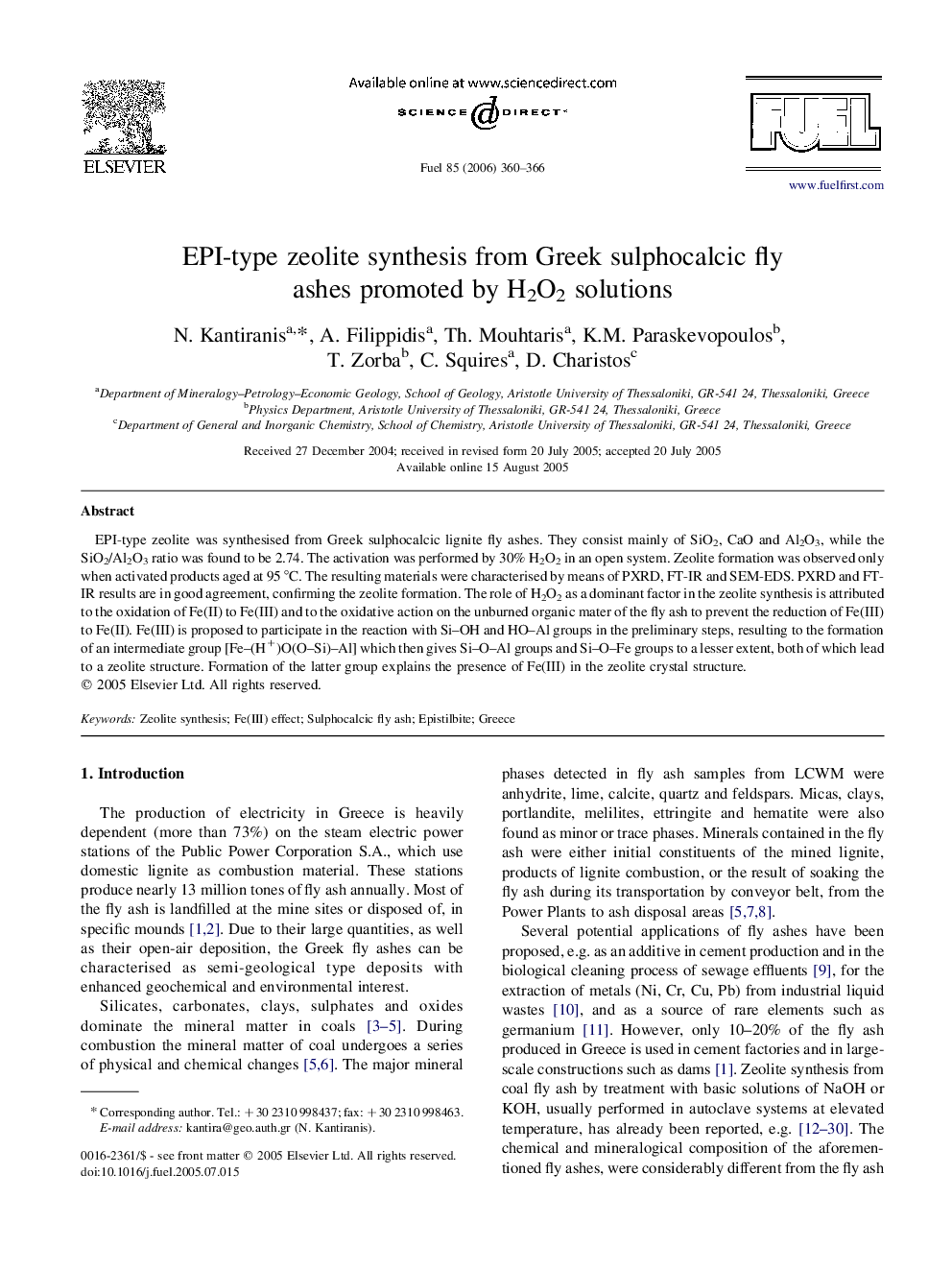| Article ID | Journal | Published Year | Pages | File Type |
|---|---|---|---|---|
| 208133 | Fuel | 2006 | 7 Pages |
EPI-type zeolite was synthesised from Greek sulphocalcic lignite fly ashes. They consist mainly of SiO2, CaO and Al2O3, while the SiO2/Al2O3 ratio was found to be 2.74. The activation was performed by 30% H2O2 in an open system. Zeolite formation was observed only when activated products aged at 95 °C. The resulting materials were characterised by means of PXRD, FT-IR and SEM-EDS. PXRD and FT-IR results are in good agreement, confirming the zeolite formation. The role of H2O2 as a dominant factor in the zeolite synthesis is attributed to the oxidation of Fe(II) to Fe(III) and to the oxidative action on the unburned organic mater of the fly ash to prevent the reduction of Fe(III) to Fe(II). Fe(III) is proposed to participate in the reaction with Si–OH and HO–Al groups in the preliminary steps, resulting to the formation of an intermediate group [Fe–(H+)O(O–Si)–Al] which then gives Si–O–Al groups and Si–O–Fe groups to a lesser extent, both of which lead to a zeolite structure. Formation of the latter group explains the presence of Fe(III) in the zeolite crystal structure.
